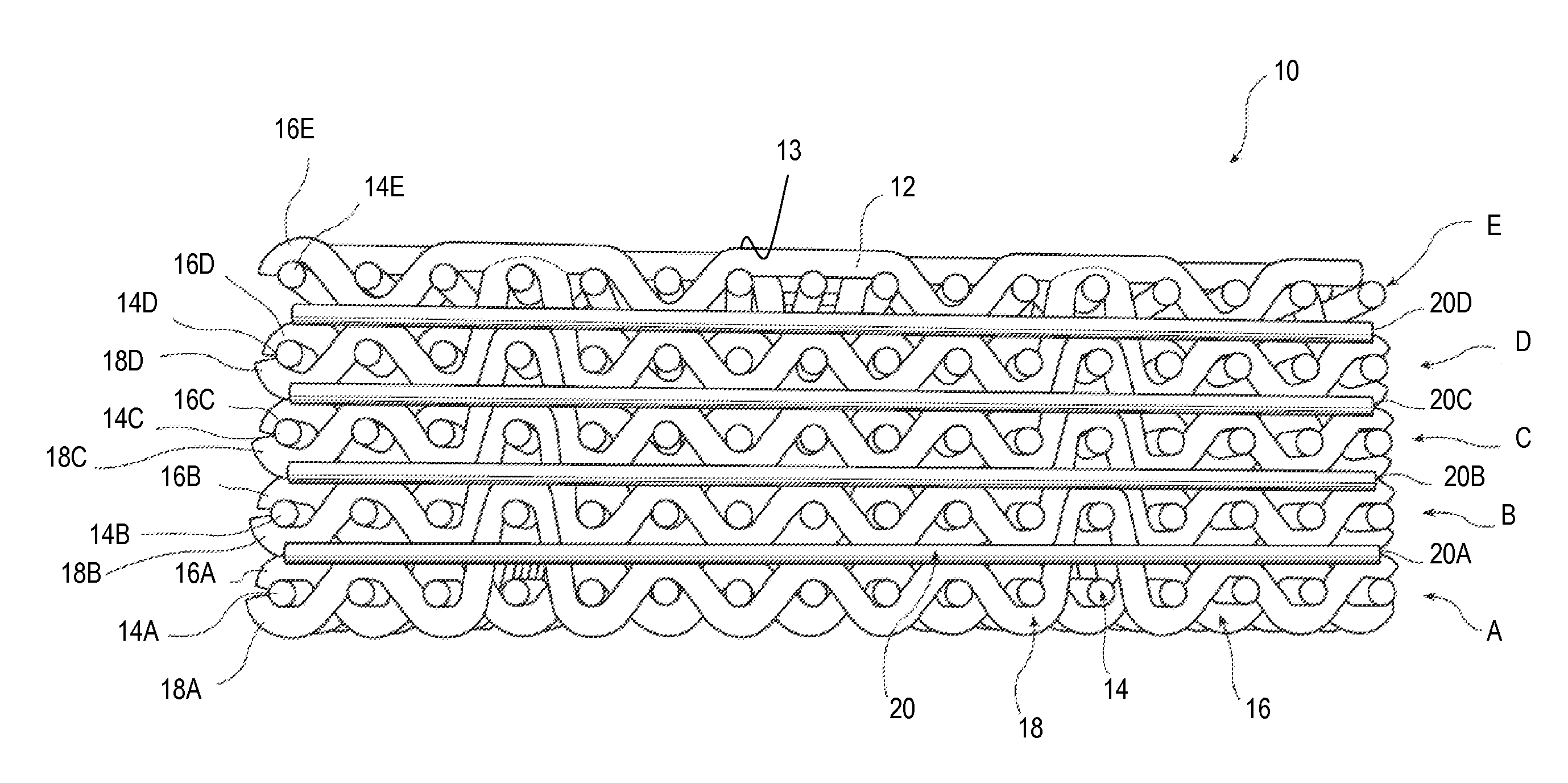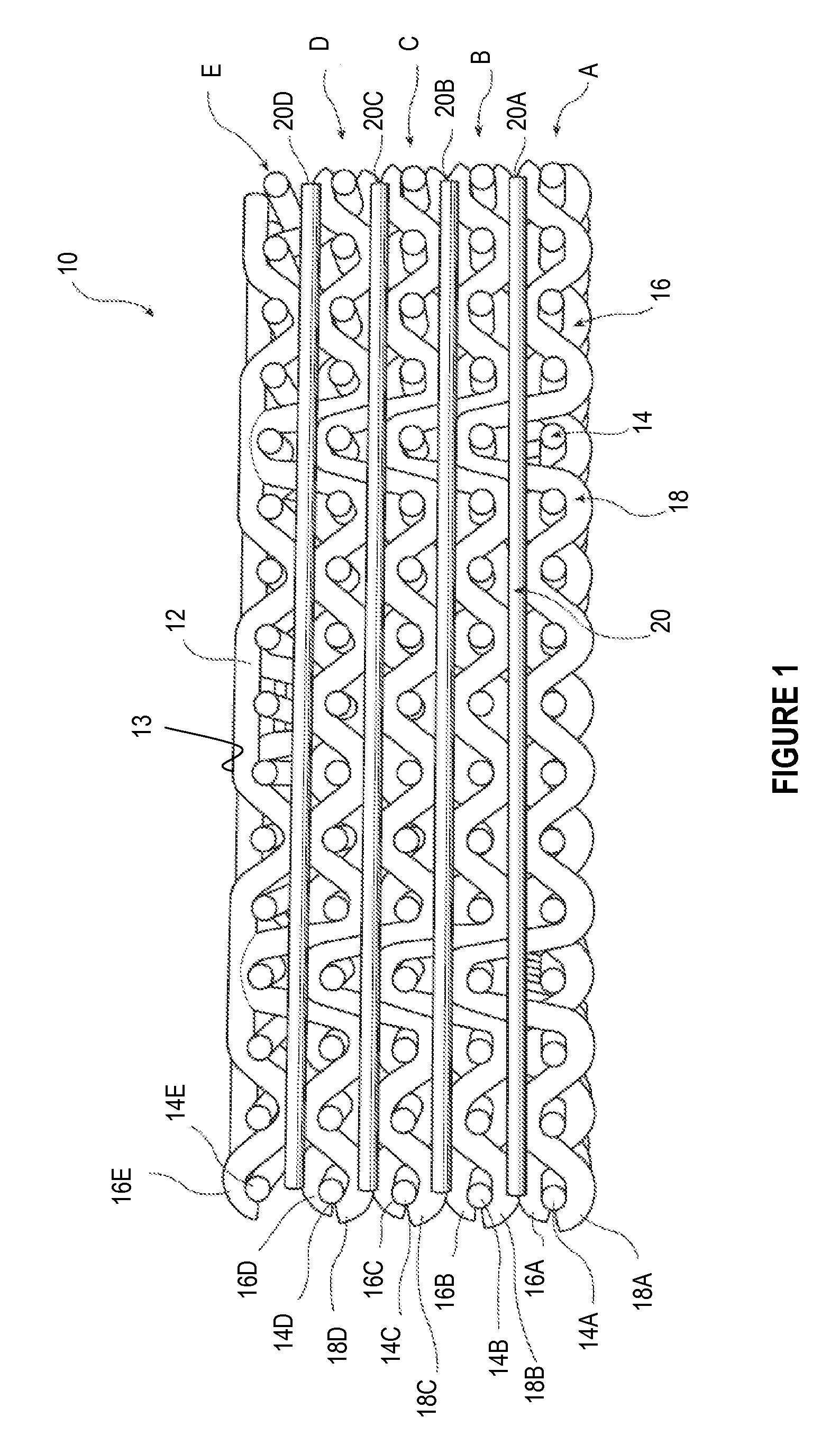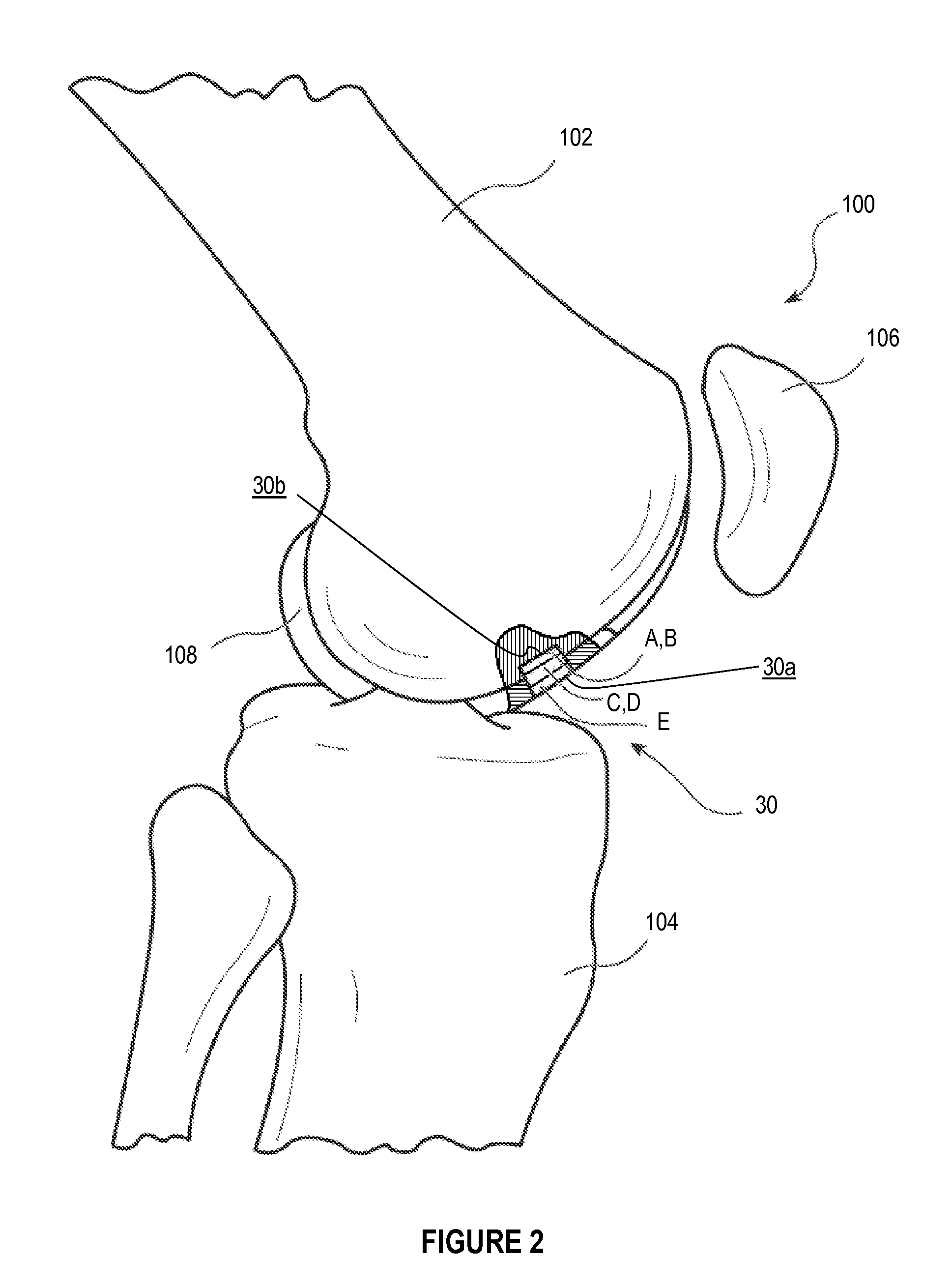In-line treatment of yarn prior to creating a fabric
a technology of yarn and fabric, applied in the field of orthopedic implants, can solve the problems of material not being able to withstand the load of some joints, wear on the opposing surface of the joint, etc., and achieve the effects of promoting bone anchoring, lubricating, and promoting soft tissue attachmen
- Summary
- Abstract
- Description
- Claims
- Application Information
AI Technical Summary
Benefits of technology
Problems solved by technology
Method used
Image
Examples
example
Wettability Testing
[0037]Fibers were subjected to various gas plasma treatments to evaluate the impact of such treatments on fiber wettability. The fibers included strands of 220 dtex Dyneema Purity™ SGX yarn, available from DSM Biomedical of the Netherlands. The following treatments were performed using a gas plasma device supplied by PVA TePla America, Inc. of Corona, California: (1) addition of hydroxyl functional group; (2) fluorination; (3) oxidation; and (4) addition of carboxyl functional group.
[0038]Each of the four treated yarns and a fifth untreated yarn was cut into five pieces of equal lengths. Individually, one end of each piece of yarn was tied to a ring stand while the other end of the yarn was allowed to hang and contact 40 mL of room temperature Crystal Violet solution, available from Becton, Dickinson and Company of Franklin Lakes, N.J.
[0039]Over time, the fibers absorbed the solution. The height or distance (in inches) that the colored solution visibly climbed int...
PUM
| Property | Measurement | Unit |
|---|---|---|
| Polarity | aaaaa | aaaaa |
| Molecular weight | aaaaa | aaaaa |
| Hydrophilicity | aaaaa | aaaaa |
Abstract
Description
Claims
Application Information
 Login to View More
Login to View More - Generate Ideas
- Intellectual Property
- Life Sciences
- Materials
- Tech Scout
- Unparalleled Data Quality
- Higher Quality Content
- 60% Fewer Hallucinations
Browse by: Latest US Patents, China's latest patents, Technical Efficacy Thesaurus, Application Domain, Technology Topic, Popular Technical Reports.
© 2025 PatSnap. All rights reserved.Legal|Privacy policy|Modern Slavery Act Transparency Statement|Sitemap|About US| Contact US: help@patsnap.com



